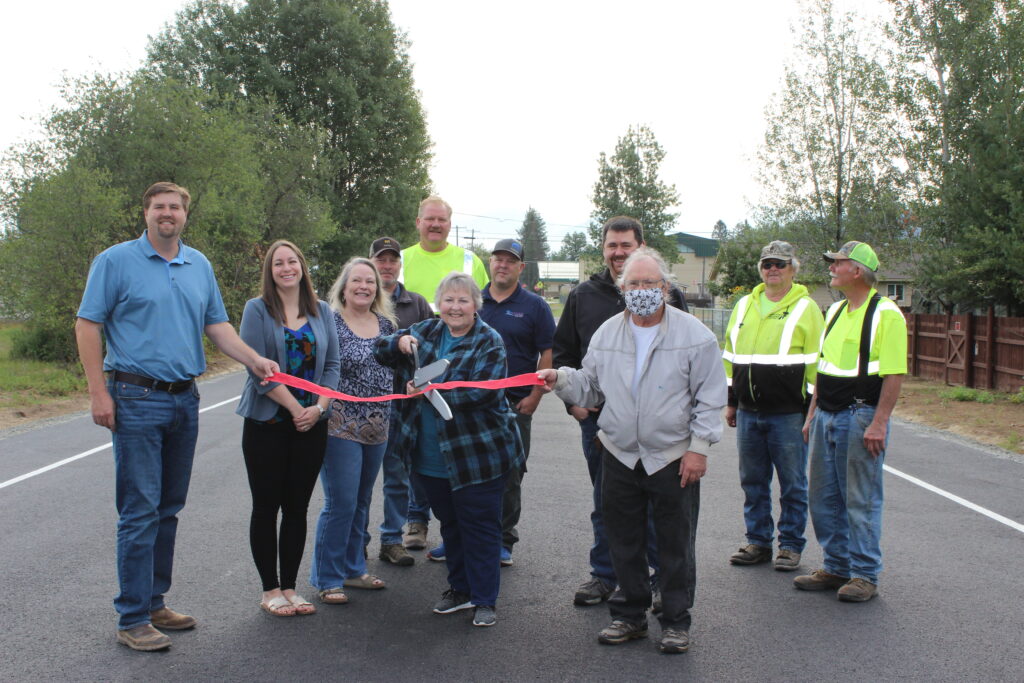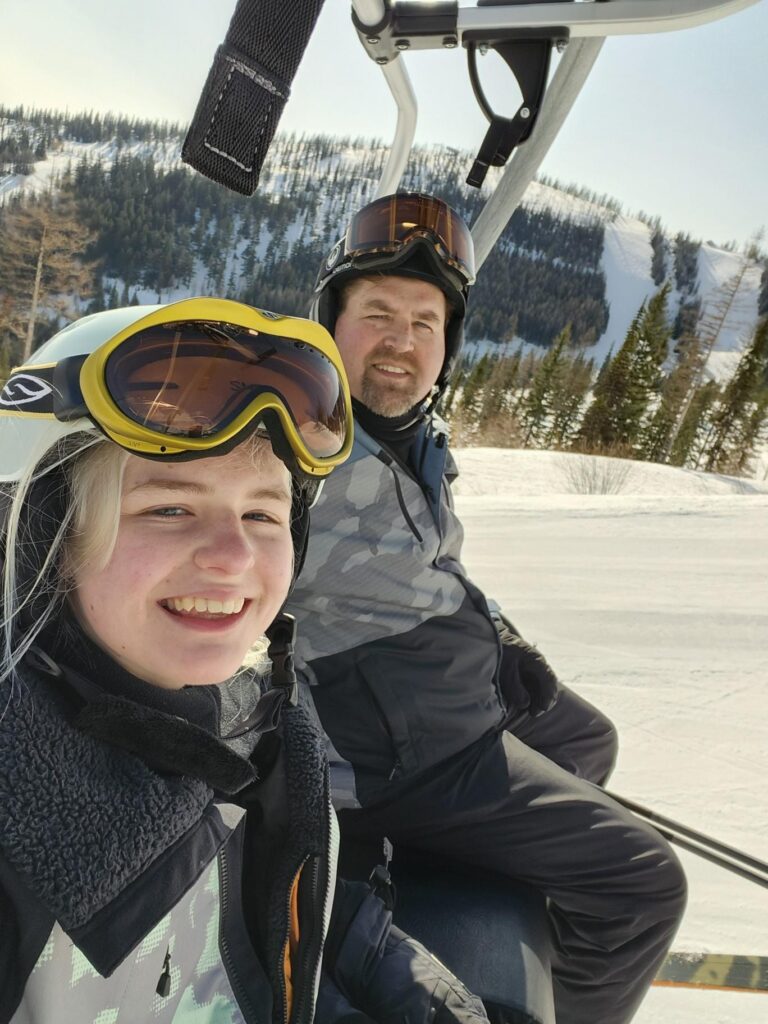For Ryan Luttmann, PE, community is at the center of everything from the projects he manages to the way he leads his team in Northern Idaho. A former public agency engineer turned consultant, Ryan brings both local knowledge and deep empathy to his work. Since joining Century West in 2018, he’s helped grow the Sandpoint office, mentored up-and-coming engineers, and supported small towns with big dreams. We sat down with Ryan to talk about his journey and what keeps him passionate about engineering.
What brought you to Century West?
Before I joined Century West, I was actually a client. I was working for the City of Sandpoint as the Public Works Director and Century West had been hired to design the downtown street improvements. What stood out to me was how much they valued their relationships with clients. That really meant something.
When the opportunity came up, I had the chance to help open an office in Sandpoint. That’s something I’d always been looking for when I worked on the consulting side—a chance to build something local in a community I care about.
You helped establish the Sandpoint office. What has that journey looked like, and what’s kept you with Century West since then?
When I joined in 2018, we had an office in Coeur d’Alene and a leased space in Sandpoint, but no one was based there full-time. It had mostly been used to meet with businesses during the downtown project. I saw an opportunity to turn that into a staffed office and grow a team rooted in the community.
What’s kept me here is the chance to keep improving the communities we serve and to help others build their careers here. I’ve been fortunate to have my career in Northern Idaho, and I want to support others who want the same thing. It’s rewarding to watch people grow into their roles and know we’re all contributing to something bigger than just one project or one office.
You’ve worked in both the public and private sectors. How has that shaped your approach to engineering?
I’ve got a good mix of experience between both the public and private sectors. I worked in consulting, but I’ve also been on the agency side as the County Engineer and Road & Bridge Director for Bonner County and as Public Works Director and City Engineer for the City of Sandpoint. That perspective really helps me understand the challenges our clients face.
When you’ve been on the public side, you know what it’s like to do the most you can with the funds available. That’s something I’ve carried into my role here at Century West. Matching community needs with funding opportunities and building projects that are practical, affordable, and impactful. That’s the part of engineering I enjoy most.

What kinds of projects have stood out the most to you?
The downtown revitalization in Sandpoint is definitely a highlight. That project turned a highway corridor into a pedestrian-friendly destination. I saw the byway get constructed around the city, and then we had the chance to transform the downtown into something that supports local businesses and encourages people to walk and explore. It was a huge shift, and I’m proud to have been part of that.
I’ve also enjoyed working in smaller communities like Clark Fork and Kootenai. In Clark Fork, for example, we helped the city update their transportation plan, and from there we were able to secure grants to fund some of their first sidewalks. Now they’ve got connections from senior housing to the school, library, and even a teen center. It’s great to see those improvements in use.
You’ve helped communities find grant funding for key infrastructure. Why is that such a priority for you?
Having worked in public agencies, I know how hard it is to get projects off the ground without funding. A lot of communities have clear needs but limited resources. If we can help them navigate grant programs and line up the right funding, we can turn those needs into real, lasting improvements.
That’s where we can add a lot of value as consultants. It’s not just about design, it’s about helping clients move forward. Whether it’s building sidewalks or improving transit access, those changes can have a big impact on people’s lives. And when you see a sidewalk or a bus stop actually being used, you know it was worth the effort.
You also serve on the Public Transportation Advisory Council. What does that role involve, and why does it matter to you?
I serve as the Chair of the Public Transportation Advisory Council for the Idaho Transportation Department. I represent District 1, which covers the northern part of the state. We advise the Idaho Transportation Department board on transit planning and funding decisions that support local communities.
Idaho is one of the fastest-growing states, and a lot of that growth is in the 55-and-older population. That makes public transportation even more important. In our area, we’ve seen how services like the SPOT Bus give people the ability to get to work, go to medical appointments, or just do their shopping. For many, it’s a way to stay independent and connected.
Mentorship seems to be a big part of your leadership style. How do you approach mentoring engineers?
I think we’re always mentoring someone, whether it’s a formal program or just day-to-day collaboration. I’ve appreciated the opportunity to be part of Century West’s Mentorship Program, but honestly, mentorship happens all the time. I try to provide feedback and support whenever someone’s interested in learning or growing.
Right now, I’m working with a newly licensed engineer who’s taking on her first project in a community where I serve as the city engineer. I’m hoping she’ll be able to visit the site and see the project in person. That kind of exposure makes a big difference early in your career.
What advice would you give to someone early in their engineering career?
Know where your strengths lie and look for opportunities that match. Engineering is a broad field, and struggling in one area doesn’t mean you’re not cut out for it. It might just mean you haven’t found your niche yet. When I talk to younger engineers, I try to help them see that it’s OK to explore a little. Find where your skills can have the biggest impact.
Also, don’t overlook the importance of buildable projects. I’ve never been a fan of over-designing something that never gets built. The best projects are the ones that move forward and make a difference.

What do you enjoy outside of work?
I enjoy skiing at Schweitzer, especially with my daughter, she’s my ski buddy. Schweitzer is the largest ski resort in Idaho, and it’s been a big part of our winters. We’ve also worked with the highway district to improve the road from the base to the top of the hill and recently received another grant to finish that stretch. It’s pretty cool to ski up there and know we helped make it more accessible.
I also play handball, which is like racquetball but without the racquet. I’ve had a chance to win a couple of open doubles titles in Idaho. And during COVID, I picked up woodworking. A friend and mentor passed away and left me some tools, so I started turning wood on a lathe—pens, bowls, that sort of thing. Recently, my daughters were in a high school Harry Potter play, and I made a wand for the director as a thank-you gift. It’s a hobby I didn’t expect to get into, but I’ve really enjoyed it.
